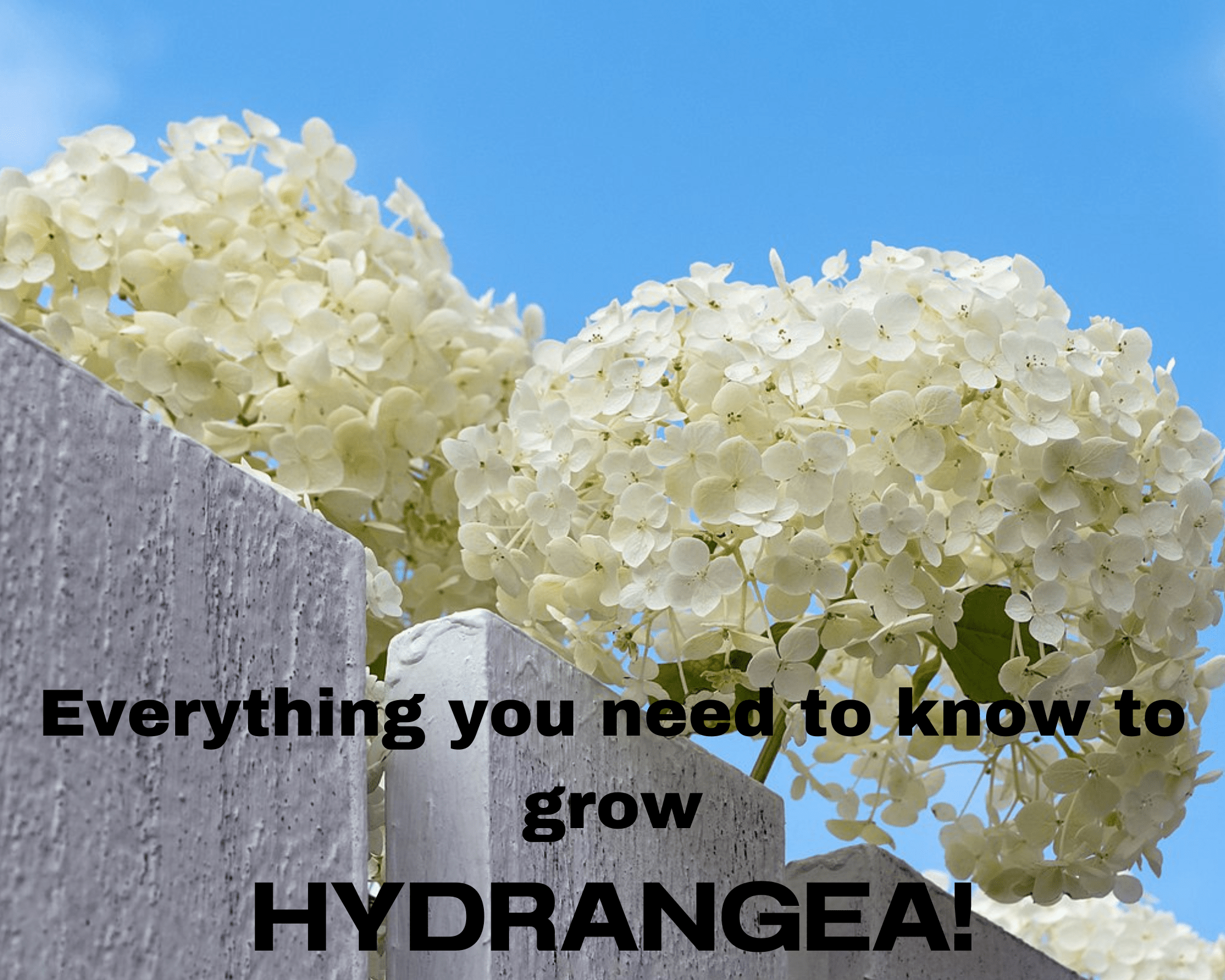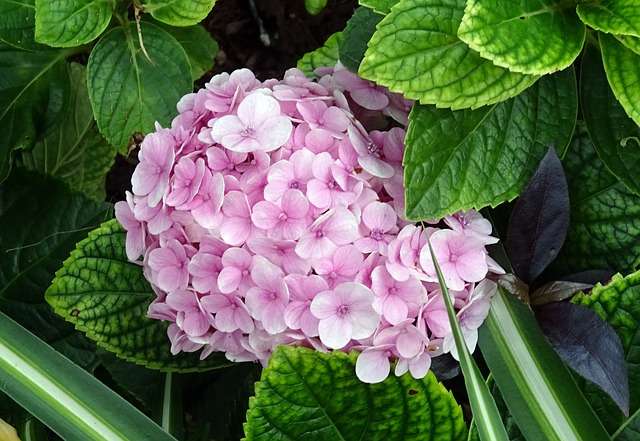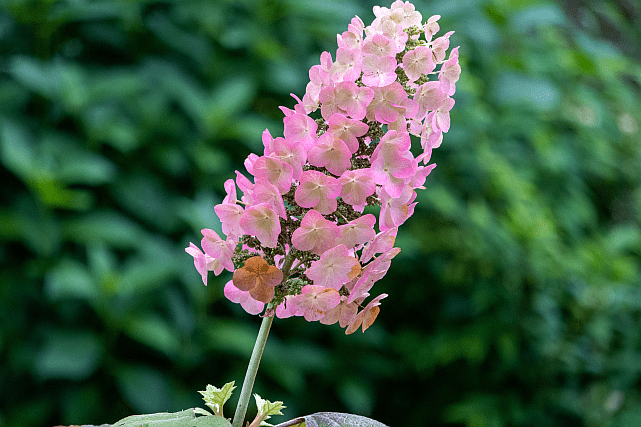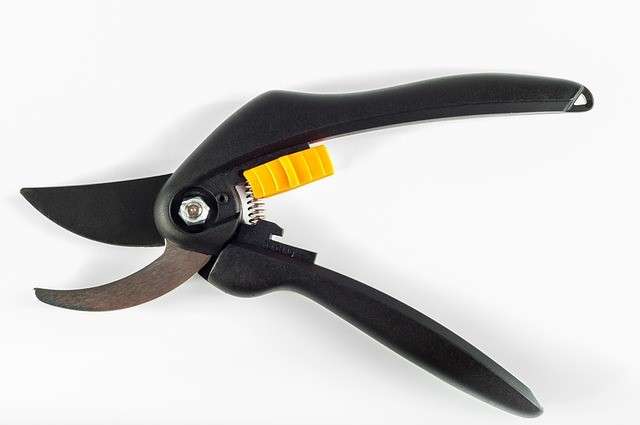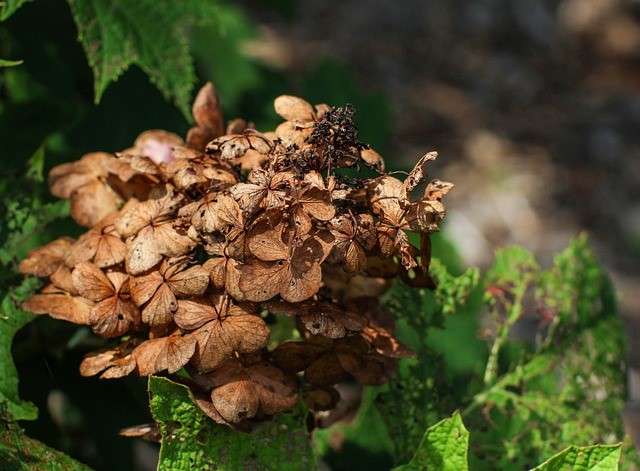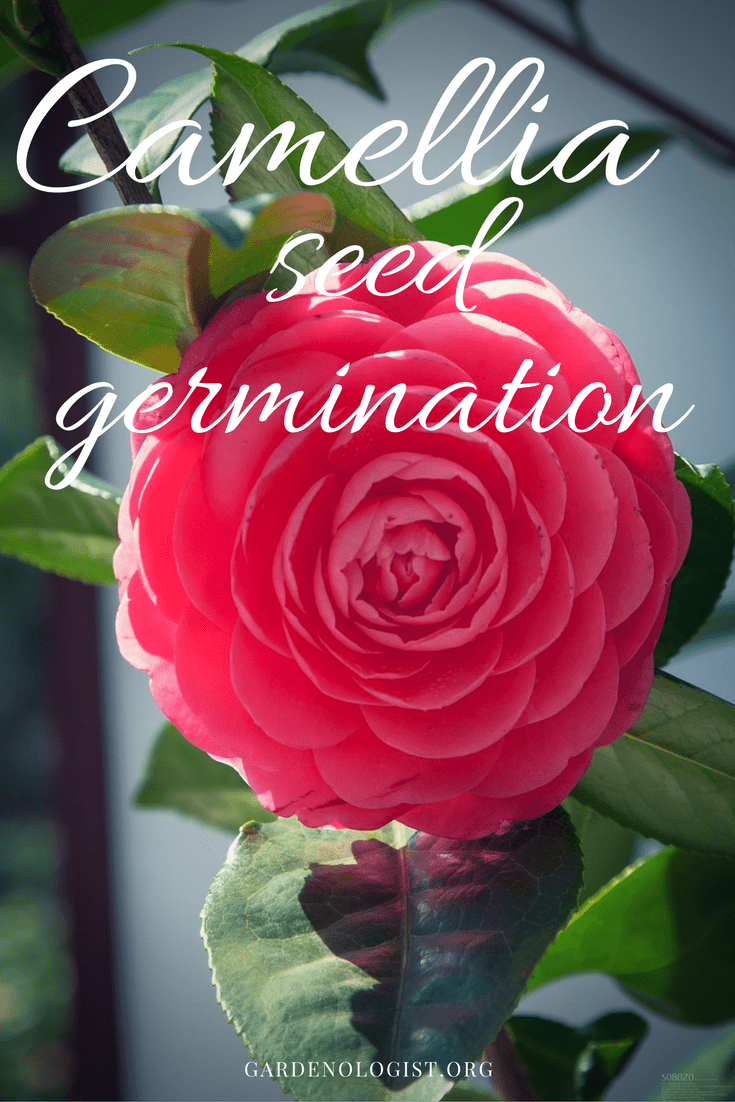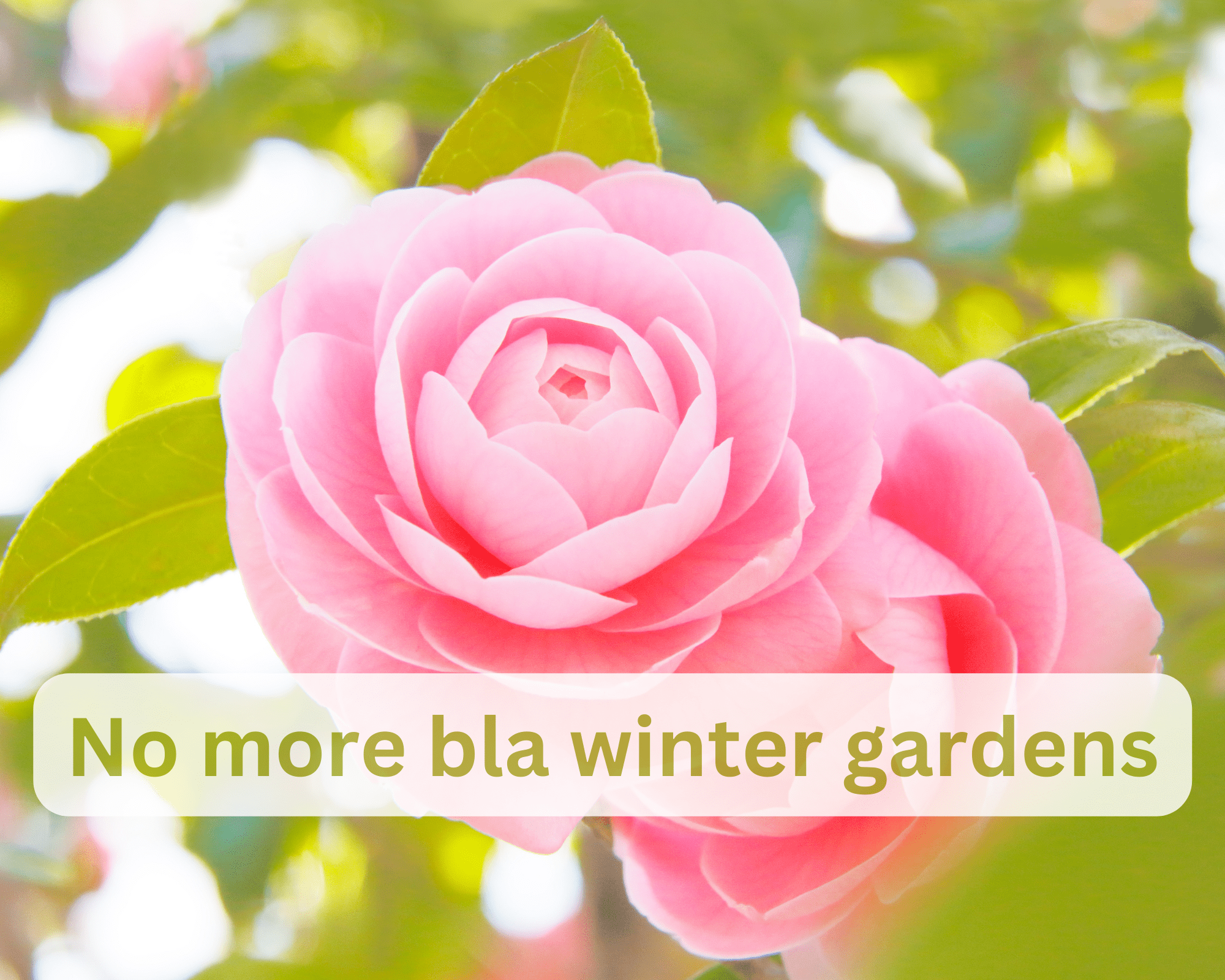This post may contain affiliate links. As an Amazon Associate we earn from qualifying purchases.
Caring for hydrangeas is quite easy and the payoff is huge!
If you’re an average American gardener looking to add a touch of elegance and charm to your garden, look no further than the beloved hydrangea. With its stunning blooms and lush foliage, hydrangeas are a popular choice for both beginners and seasoned gardeners alike.
But like any plant, they require some tender love and care to thrive. And, you may be surprised to learn that some care requirements vary among the different types of hydrangea.
Choosing the right hydrangea is the first step
Before we dive into care tips, it’s essential to choose the right hydrangea for your garden. American gardeners typically grow one (or more) of five types of hydrangea.
Each type has its unique characteristics, growth habits, and care requirements. Consider factors such as your climate, space availability, and desired bloom color when selecting your hydrangea variety.
Here’s a quick overview of the various types of hydrangea commonly available:
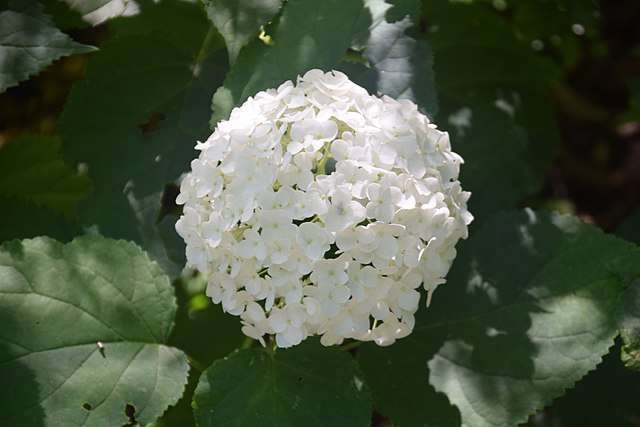
Smooth hydrangea
If you’re a hydrangea aficionado you’ve no doubt heard of ‘Annabelle.’ For those who haven’t, read up on this beauty as we teach you “How to Plant ‘Annabelle Hydrangea.”
Released to the public in the 1960s, she quickly shot to the top of many “must-have” plant lists.
The smooth hydrangea (Hydrangea arborescens), is our hometown cutie. Native to the U.S., it is often referred to as the ‘wild hydrangea.’ This plant can reach up to six feet in height and it is commonly grown as a hedge.
Smooth hydrangea is a summer bloomer. Look forward to green blossoms that eventually white. Bonus: not only are these blooms gorgeous, they can last from 6 to 8 weeks! Give it full sun in the morning (light shade in the afternoon) to get maximum bloom
The good news for our southern and southwest gardeners is that smooth hydrangea is heat-tolerant and does best in winters in USDA Zones 4 through 9.
Care of smooth hydrangea
Grow the smooth hydrangea in partial shade for best results. Keep the soil moisture content similar to that of a wet, well-wrung sponge.
Fertilize with a general-purpose fertilizer, such as a 10-10-10, at the rate suggested on the fertilizer package. Apply it just as the plant begins to leaf out and then monthly until late July. After that, don’t fertilize again until the following season.
Prune the smooth hydrangea during dormancy. This one blooms on new wood, which means that the more new wood you can produce by pruning off the old, the more flowers you’ll receive in the following season.
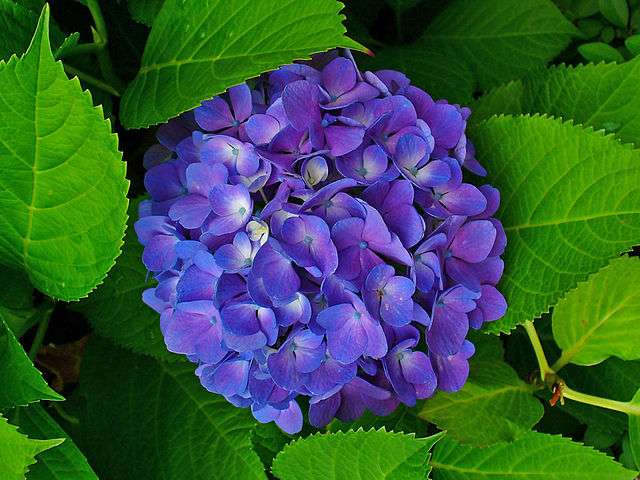
Bigleaf hydrangea
Formally known as Hydrangea macrophylla, the bigleaf hydrangea boasts the mophead flower form which is big and puffy. Or you can choose the lacecap flower form, which is a bit more dainty with its flattened flower clusters.
Both bloom in shades of blue, pink and white, depending on the pH of the soil (we’ll get into this in a minute). You can actually change your flowers from blue to pink and the other way around. Keep in mind, however, that white bigleaf flowers will always be white.
These hydrangea grow naturally as deciduous shrubs in USDA Hardiness Zones 5 through 11. They can grow to a height of between three and 10 feet with a similar spread.
If you want your pink flowers to turn blue, add aluminum sulfate to the soil in early spring or late autumn. If it’s pink flowers you want, add lime during that same time period.
This is the ideal choice if you’re looking for a shrub for your shady or partially shady garden spots.
2 main types of bigleaf hydrangea
The bigleaf hydrangeas are further separated into two categories. These include:
Mophead hydrangeas
The mopheads are beloved by American gardeners, from coast-to-coast. With large, rounded purple, pink or blue flowers, the shrub thrives in USDA hardiness zones 6 through 9 (find your growing zone here).
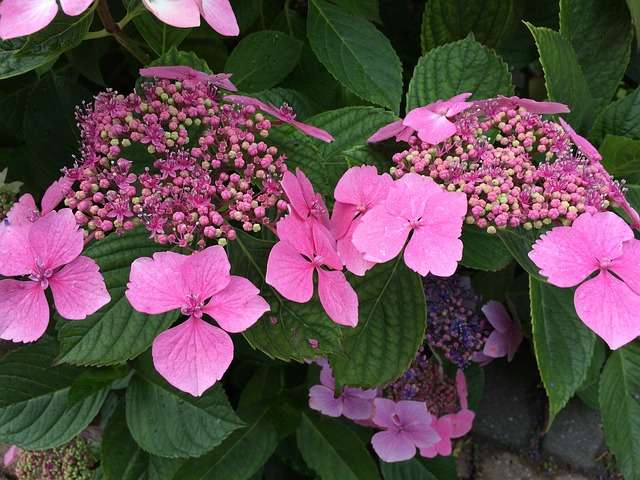 Lacecap hydrangea (Hydrangea macrophylla normalis)
Lacecap hydrangea (Hydrangea macrophylla normalis)
The leaves of the lacecap hydrangea are quite like those of the bigleaf. But it’s the flowers that will help you identify this one. The buds are in the center, surrounded by flowers.
Grow lacecap hydrangea in hardiness zones 6 through 9.
How to care for bigleaf hydrangea
Light, water and fertilizer
The most important aspect of caring for hydrangeas is to provide it with the right amount of shade. Too much and it won’t provide the big flower show that growers love. Not enough shade and the plant may wilt, leaves may burn and flowers might turn brown. The ideal planting site will provide the bigleaf hydrangea with morning sun and afternoon shade.
Keep the soil consistently moist – the plant will wilt to tell you it’s thirsty.
Caring for hydrangeas, as with many plants, means supplying it with nutrients. Fertilize your bigleaf hydrangea in early spring as soon as it begins to leaf out. Then, reapply monthly until the end of July. Don’t fertilize after this until the following spring.
What to use? An all-purpose fertilizer, such as 10-10-10 is best. Follow the instructions on the fertilizer label for the best results.
No pruning allowed
“This is probably the number one mistake people make with the bigleaf hydrangea, and it’s no wonder: once the plant goes dormant in winter, it simply looks like it ought to be cut back,” according to the folks at Hydrangea.com. They go on to caution growers to “Resist the temptation!”
The reason for this is that the bigleaf hydrangea’s flower buds for the following season “… have already formed on the plant.”
If you prune, you’ll miss the gorgeous flower show next summer.
Want to change the color of the bigleaf hydrangea’s flowers?
If you don’t already own a soil pH meter, it’s time to get one because you will be using it frequently.
Keep the soil pH at 5.5 or less and you’ll get blue flowers. Alter the pH to 6.5 and above and you’ll have pink flowers.
To accomplish the former, use a pH meter to check the soil’s pH. Then, use:
- Aluminum sulfate, such as Espoma Organic Soil Acidifier, to lower the soil’s pH
- Organic Dolomite Lime, such as this one or similar, to raise the soil’s pH
Keep in mind that the soil will revert to its original pH over the course of 2 to 4 weeks, so you’ll need to reapply regularly. Your soil pH meter will come in handy to let you know when it’s time to apply the appropriate soil amendment.
Apply the product according to the package’s instructions and follow all personal protection suggestions during application.
Oakleaf hydrangea
Looking for a hydrangea that won’t wilt in the warmest part of the garden? Oakleaf (Hydrangea quercifolia) is your gal.
In fact, the oakleaf hydrangea blooms best in areas with warm summers.
The oakleaf hydrangea is hardy to USDA zones 5 through 9. There, you can expect it to grow from 4 to 8 feet in height and width with a gorgeous rounded habit.
The flowers are white and cone-shaped but occasionally turn pink as they mature, depending on the variety. The flower show runs from late spring to early summer.
Care notes for oakleaf hydrangea
Be careful when pruning an oakleaf hydrangea by keeping in mind that it blooms on the previous season’s wood. To be on the safe side, we recommend not pruning but, if you must, never prune after August 1.
Follow the same watering requirements as mentioned above for bigleaf hydrangea. Fertilize with an all-purpose fertilizer (see the Resources section, below, for our recommendation) in early spring and again in mid-summer.
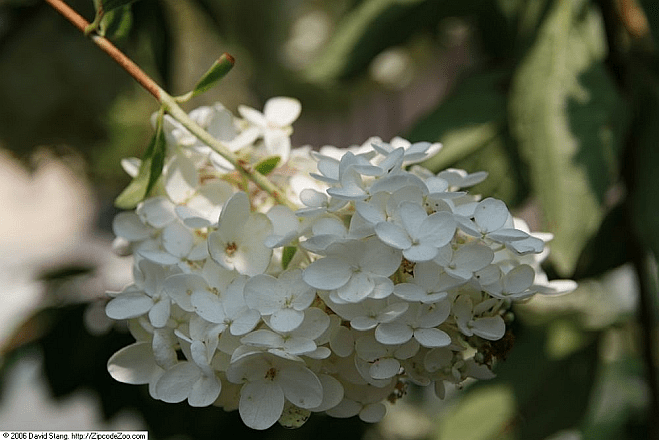
Panicle hydrangea
Those gorgeous hydrangeas with cone-shaped flowers? They’re the panicle bunch, also known as Hydrangea paniculata. Typically, the shrub’s flowers begin their bloom season in white, but eventually turn pink or red.
- Panicles are the best hydrangeas to grow in tree form.
- Panicles are the easiest of all hydrangeas to grow and are hardy to USDA zones 3 through 8, although ‘Limelight’ is hardy to zone 9.
- Panicles are the most sun-tolerant of all hydrangeas. If grown in zones 6 through 9, however, give them afternoon shade.
Care for the panicle is the same for the previously mentioned hydrangeas, with the exception of pruning. This one blooms on new wood, so feel free to prune while it’s dormant.
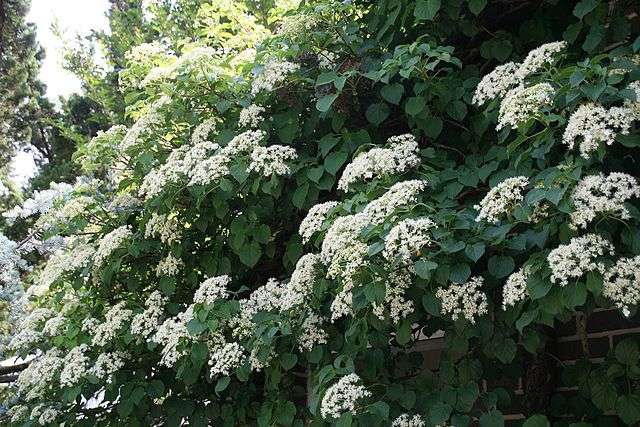
Climbing hydrangea
The climbing hydrangea (Hydrangea petiolaris) hails from Japan. It’s a slow-grower at first but takes off as it ages. This is a clinging vine that produces white, fragrant lacecap flowers.
Grow this beauty over an arbor or a doorway or allow it to cover a retaining wall. And, cover them they will, because once it takes off, there’s no stopping it from reaching 80 feet in length.
Bonus: it thrives in the shade. It does prefer hot and humid weather, however.
Planting the hydrangea
Like many of our garden beauties, hydrangea prefers well-draining soil and most thrive with morning sun and afternoon shade.
If needed, add organic matter like compost to the hydrangea bed to improve soil fertility and drainage before planting. Never add amendments to the planting hole, regardless of what you read online.
“This leads to something called the ‘bathtub effect,’, wherein water infiltrates very rapidly into the amendment you added, but as it drains and hits your natural soil surrounding the hole, it slows to a halt,” cautions the experts at Proven Winners, a leading plant brand in the U.S.
“During this time, it sits around the roots, leaving them susceptible to rot,” they conclude.
Dig a hole that is wider yet slightly shallower than the hydrangea’s root ball. Place the roots into the hole and backfill with soil, stopping halfway to fill the hole with water. When the water drains away, finish filling the hole and water thoroughly when finished.
Finally, add a 2-to3-inch layer of mulch around the plant (don’t allow it to touch the main stem) to help retain moisture and regulate soil temperature. In warmer climates, add an additional 2 inches of mulch.
 Sharing means caring for hydrangeas: When and how to water and fertilize hydrangeas
Sharing means caring for hydrangeas: When and how to water and fertilize hydrangeas
Hydrangeas have moderate water needs, so it’s important to strike a balance. Water deeply but infrequently. To determine if the plant needs water, stick your finger about 4 inches into the soil. If it comes out dry, it’s time to water.
Overwatering can lead to root rot, while underwatering can cause the plant to wilt and produce fewer blooms. During the hot summer months, consider providing extra water to keep the soil consistently moist.
Begin fertilizing the hydrangea in March. Use a balanced fertilizer, such as 10-10-10 at the hydrangea’s drip line. Repeat in May and July.
Some gardeners prefer the one-and-done fertilization program, and that’s perfectly fine. In this case, apply a time-release fertilizer in March (See the Resources section at the end of this post for recommendations).
The fertilizer package’s label contains the information necessary when it comes to calculating how much to give the hydrangea so read it carefully.
Stop fertilizing the hydrangea two months before the average first frost date in your area.
If and when to prune hydrangea
Pruning hydrangeas helps maintain their shape, removes dead wood, and encourages new growth. Whether your hydrangea will profusely bloom or struggle with flowering also depends on how you prune.
As mentioned earlier, pruning requirements vary depending on the hydrangea type. Bigleaf hydrangeas generally bloom on old wood, so prune them immediately after flowering. Climbing hydrangea also blooms on old wood.
Panicle and smooth hydrangeas bloom on new wood, so they can be pruned in late winter or early spring before new growth begins. Smooth hydrangeas can be cut back to the ground in late winter for a fresh start.
Common hydrangea problems and solutions
Why isn’t my hydrangea blooming?
Lack of blooms is a common concern. It can be attributed to several factors, including insufficient light, improper pruning, extreme cold or heat, or even certain pest infestations.
Evaluate the growing conditions and adjust accordingly. Provide more sunlight if possible, prune at the right time, and protect the plant from extreme weather conditions. Additionally, ensure your hydrangea is not being shaded by other plants.
Why are the leaves turning yellow or brown?
Yellow or brown leaves may indicate overwatering, poor drainage, nutrient deficiencies, or pests.
Ensure your hydrangea is not sitting in waterlogged soil. Adjust watering practices accordingly and consider improving drainage.
Check for signs of pests like aphids or spider mites and treat them accordingly. Nutrient deficiencies can be addressed by using a balanced fertilizer.
Dealing with powdery mildew
Powdery mildew is a fungal disease that can affect hydrangeas, causing a powdery white coating on the leaves. Improve air circulation around the plant by pruning, spacing, and avoiding overhead watering.
Hydrangeas are a brilliant addition to any garden, but like any plant, they require care and attention to thrive. With a little effort, your hydrangeas will reward you with their stunning colors and enchanting presence year after year.
Preserve your hydrangea flowers so that you can enjoy them all year long!
Resources
‘Annabelle’ Smooth Hydrangea Plant
Endless Summer BloomStruck, Big Leaf Hydrangea
Glowing Embers Pink Mophead Hydrangea
Ruby Slippers Dwarf Oakleaf Hydrangea
Quick Fire Fab Panicle Hydrangea
Feature image: W.carter, CC0, via Wikimedia Commons
